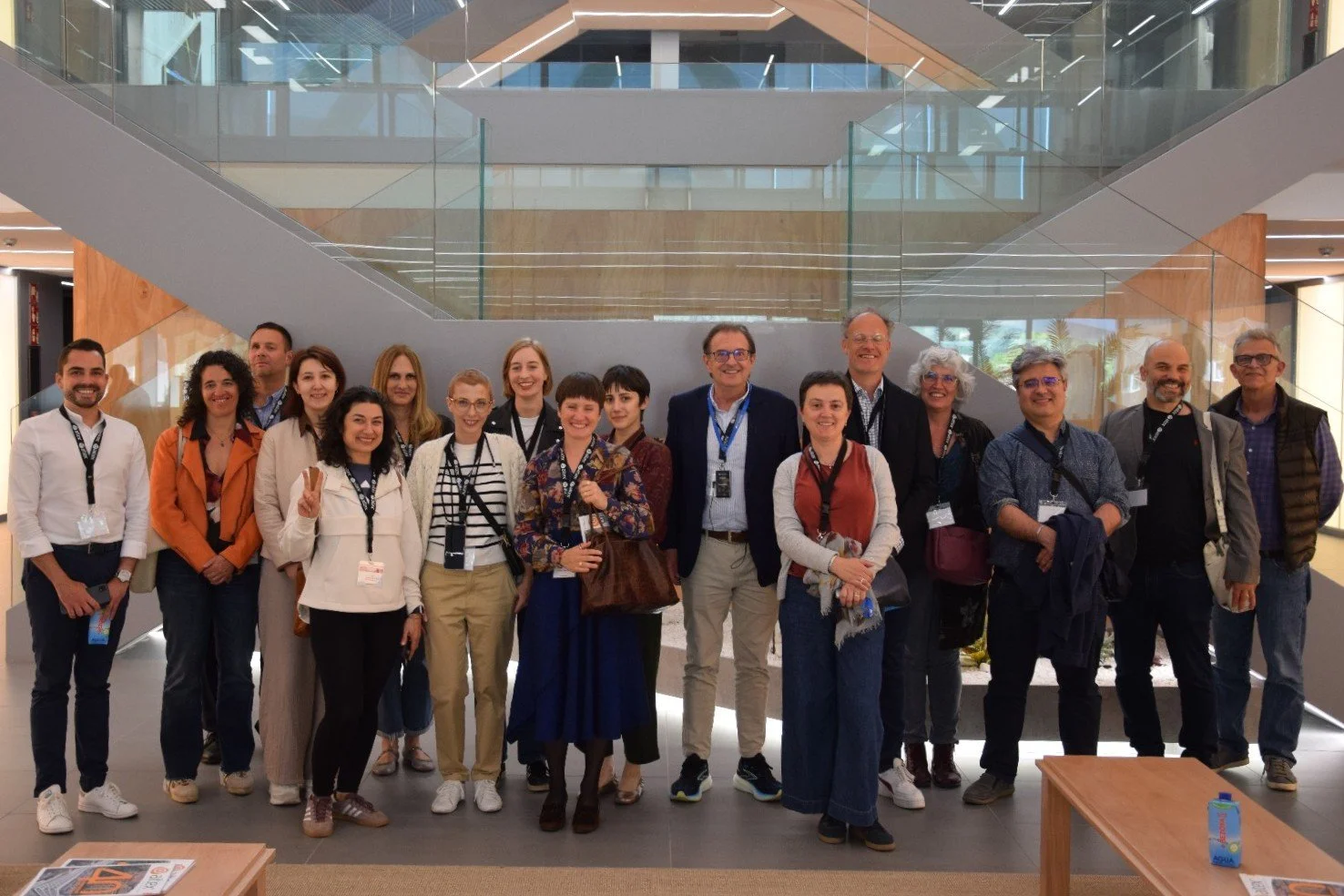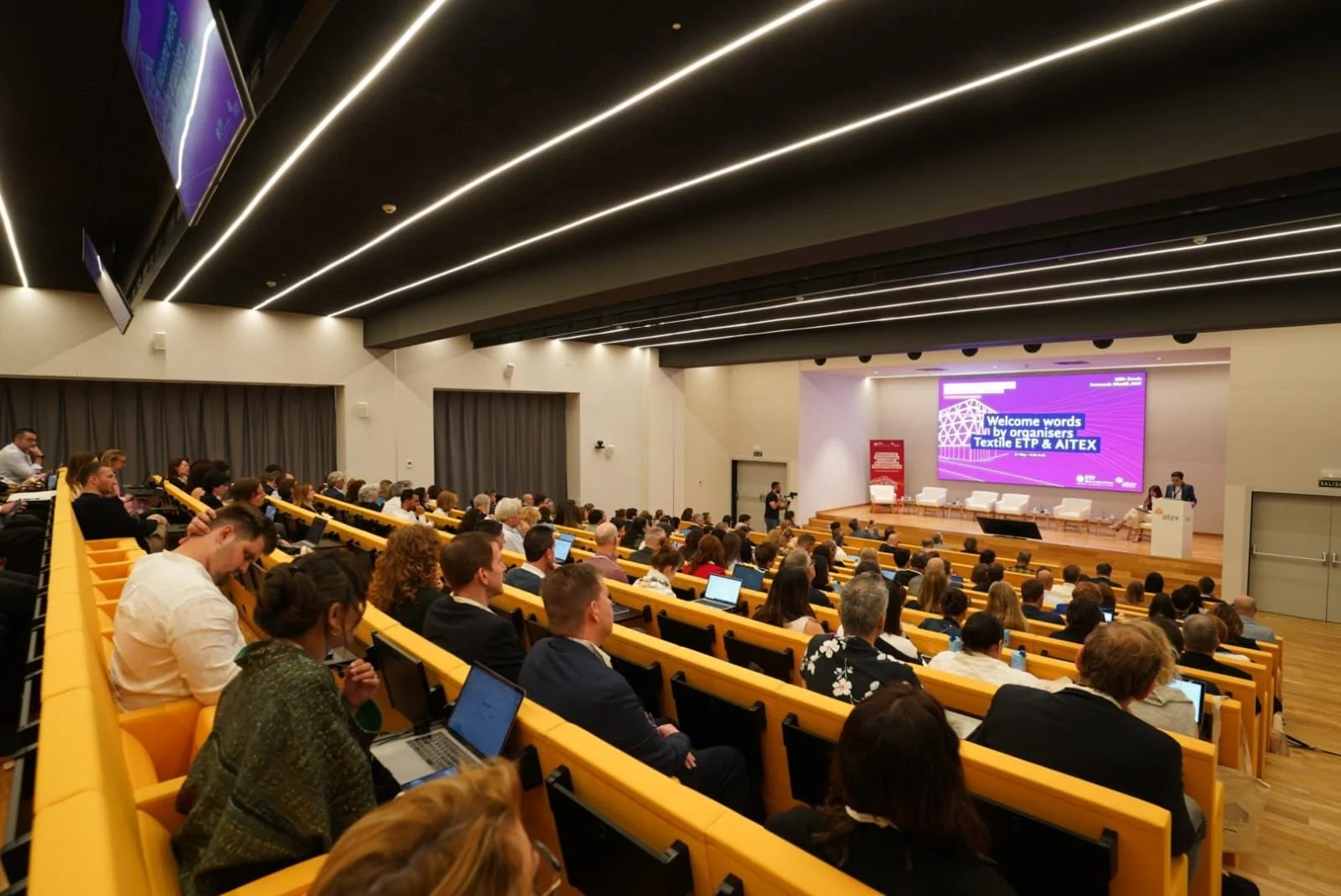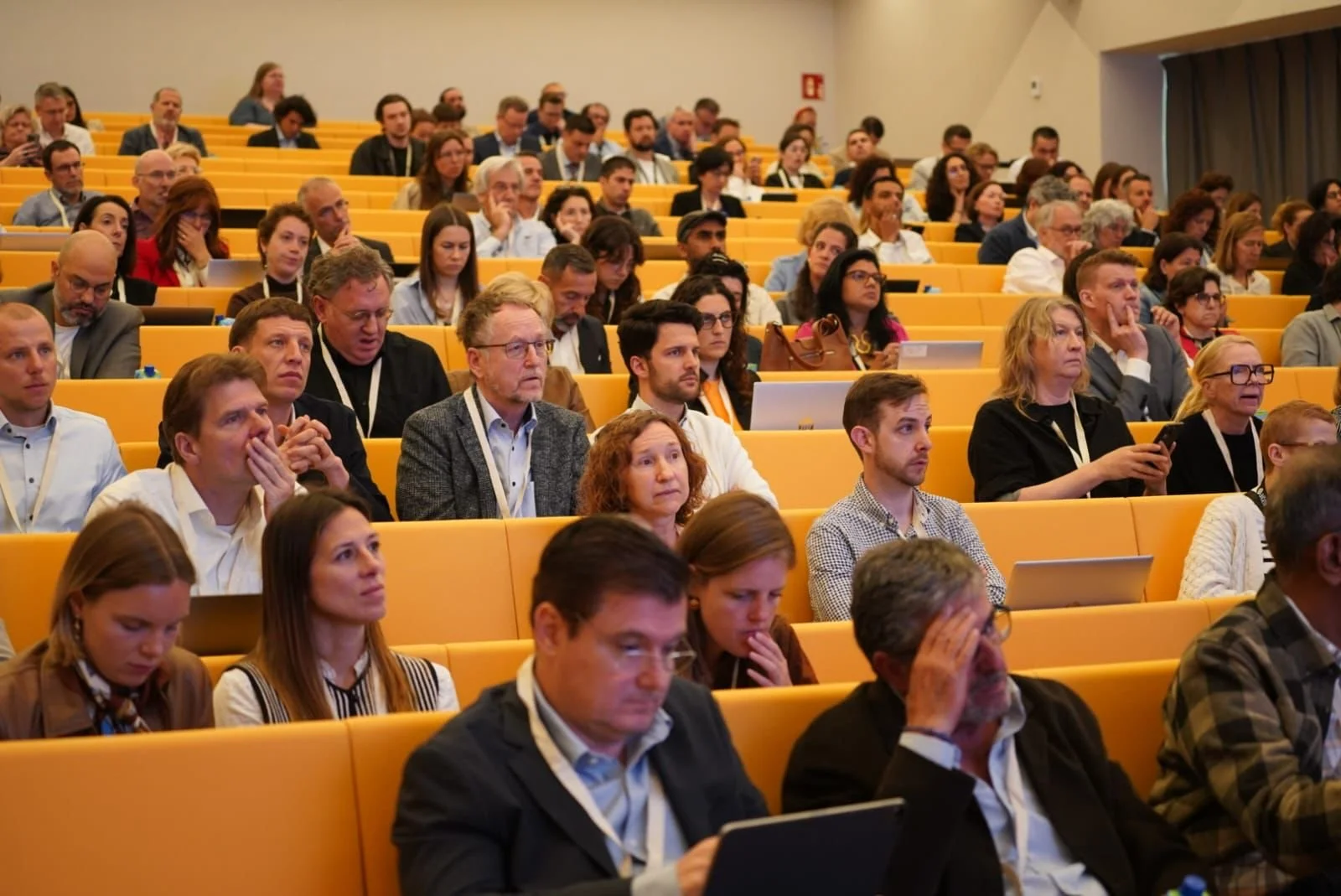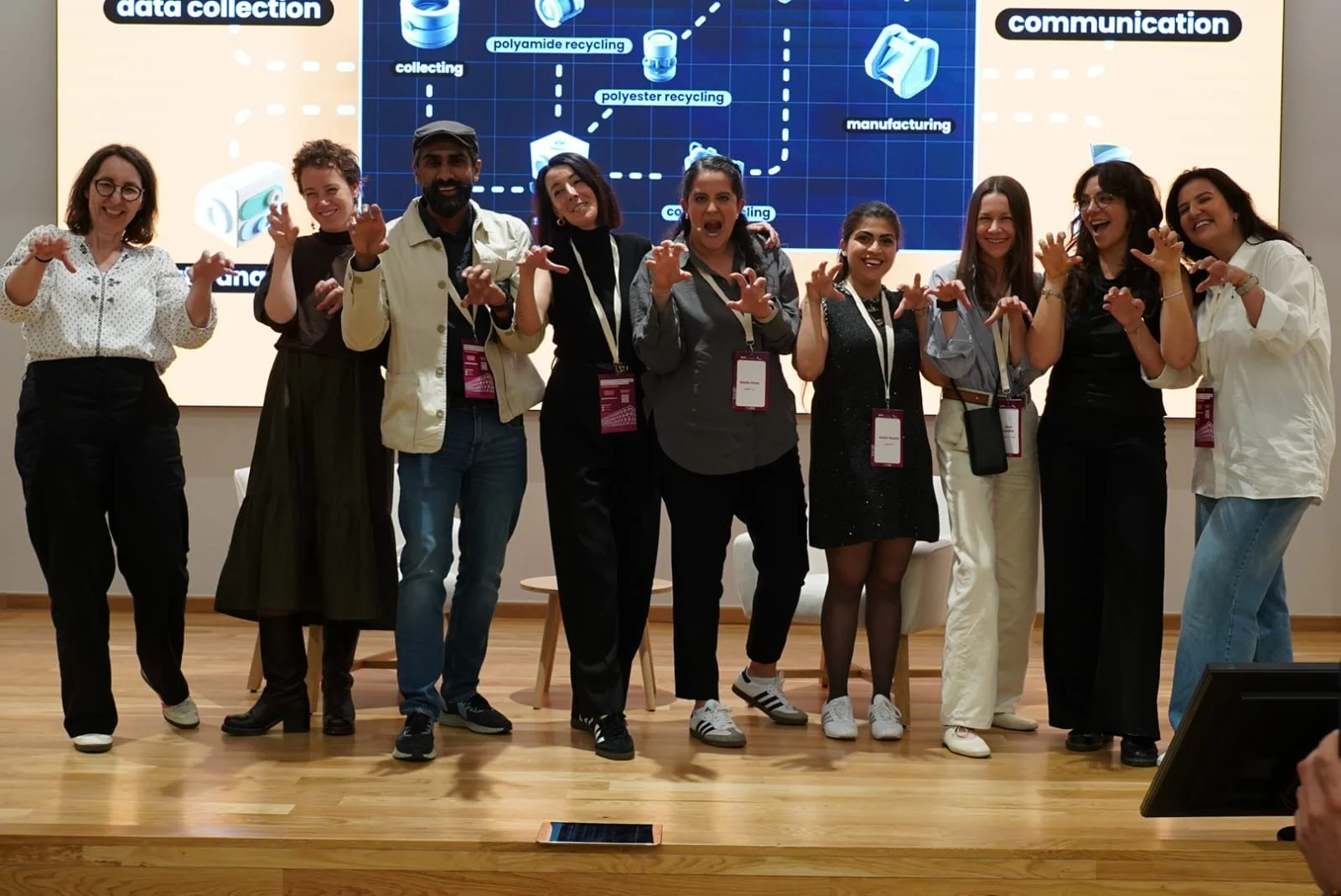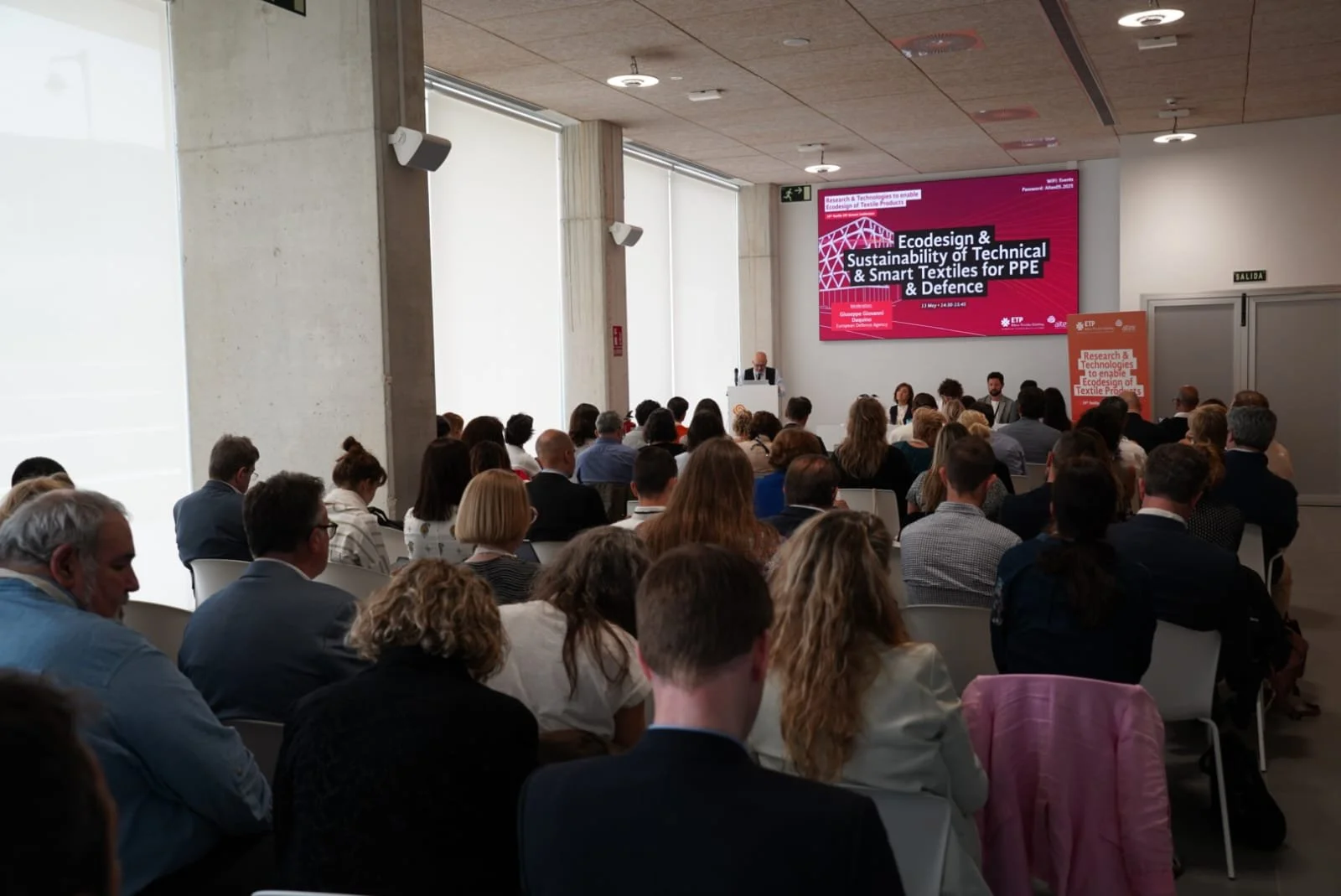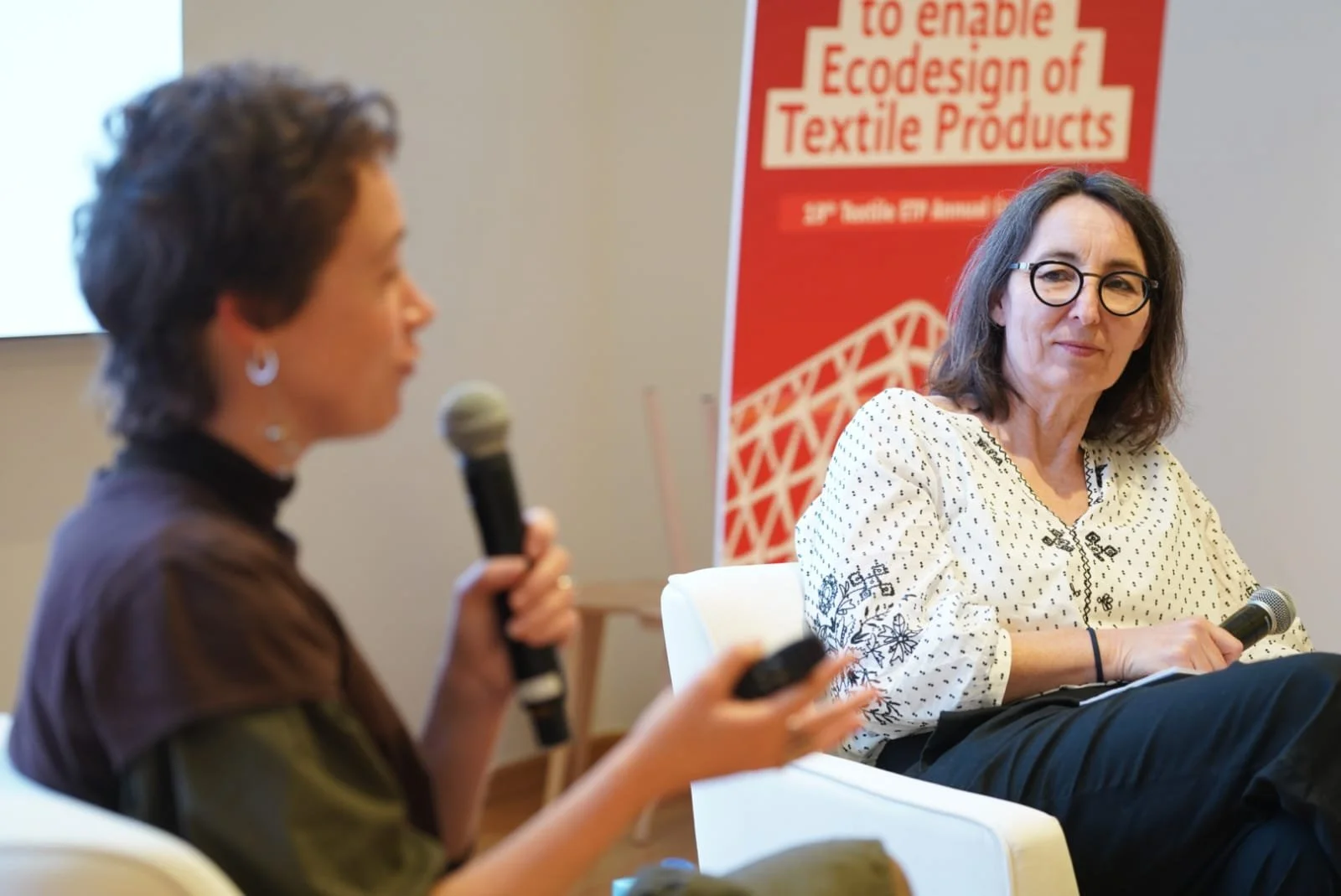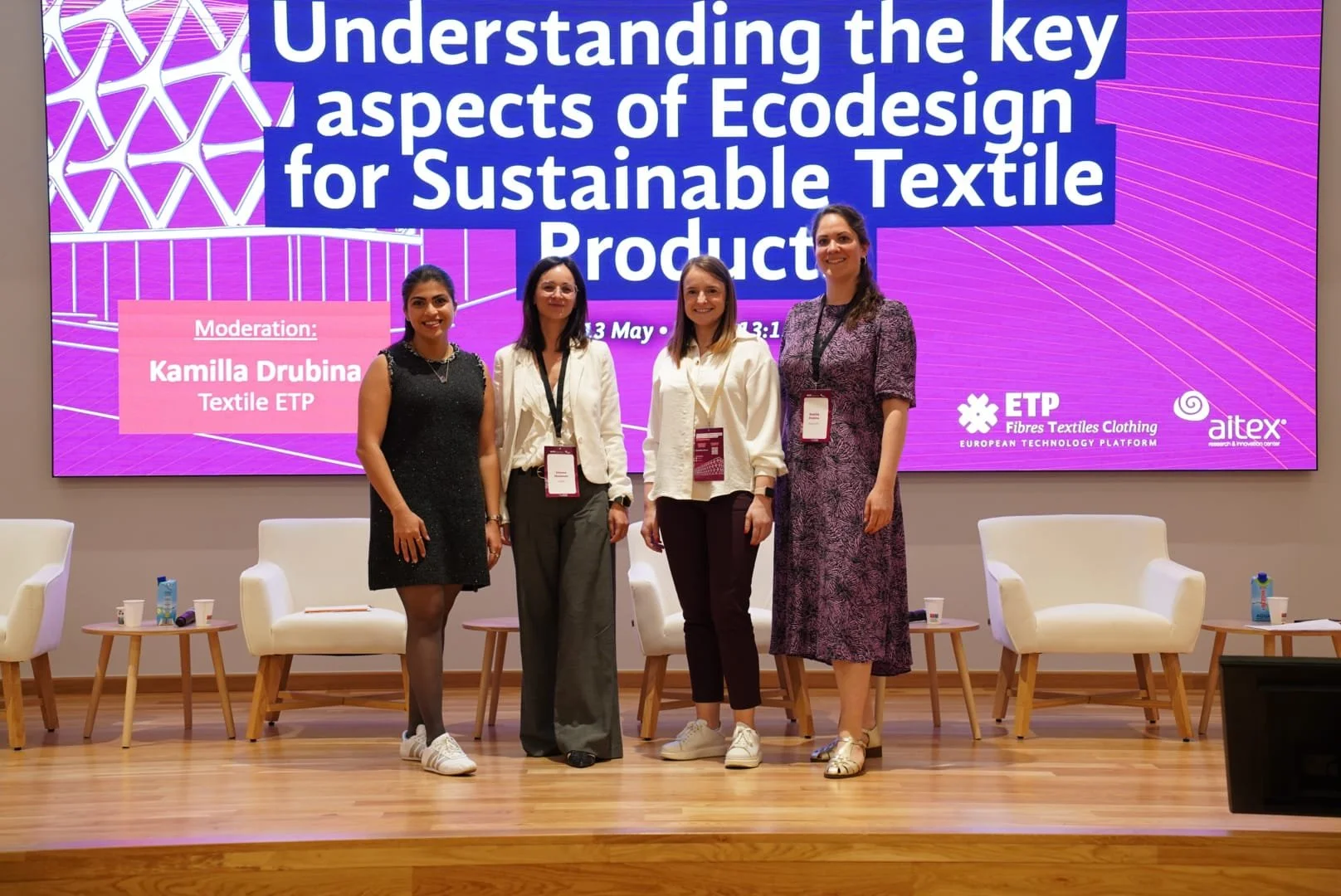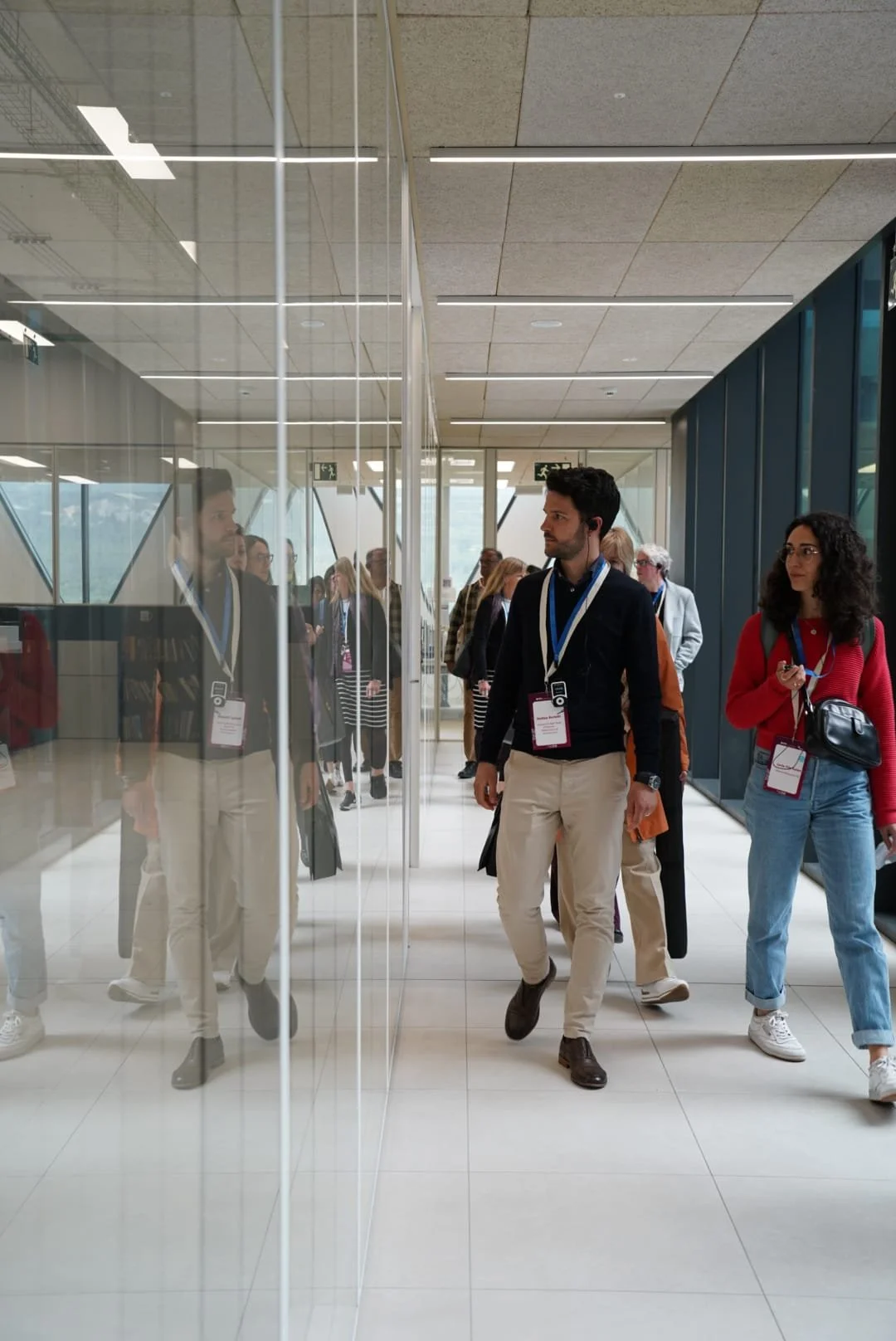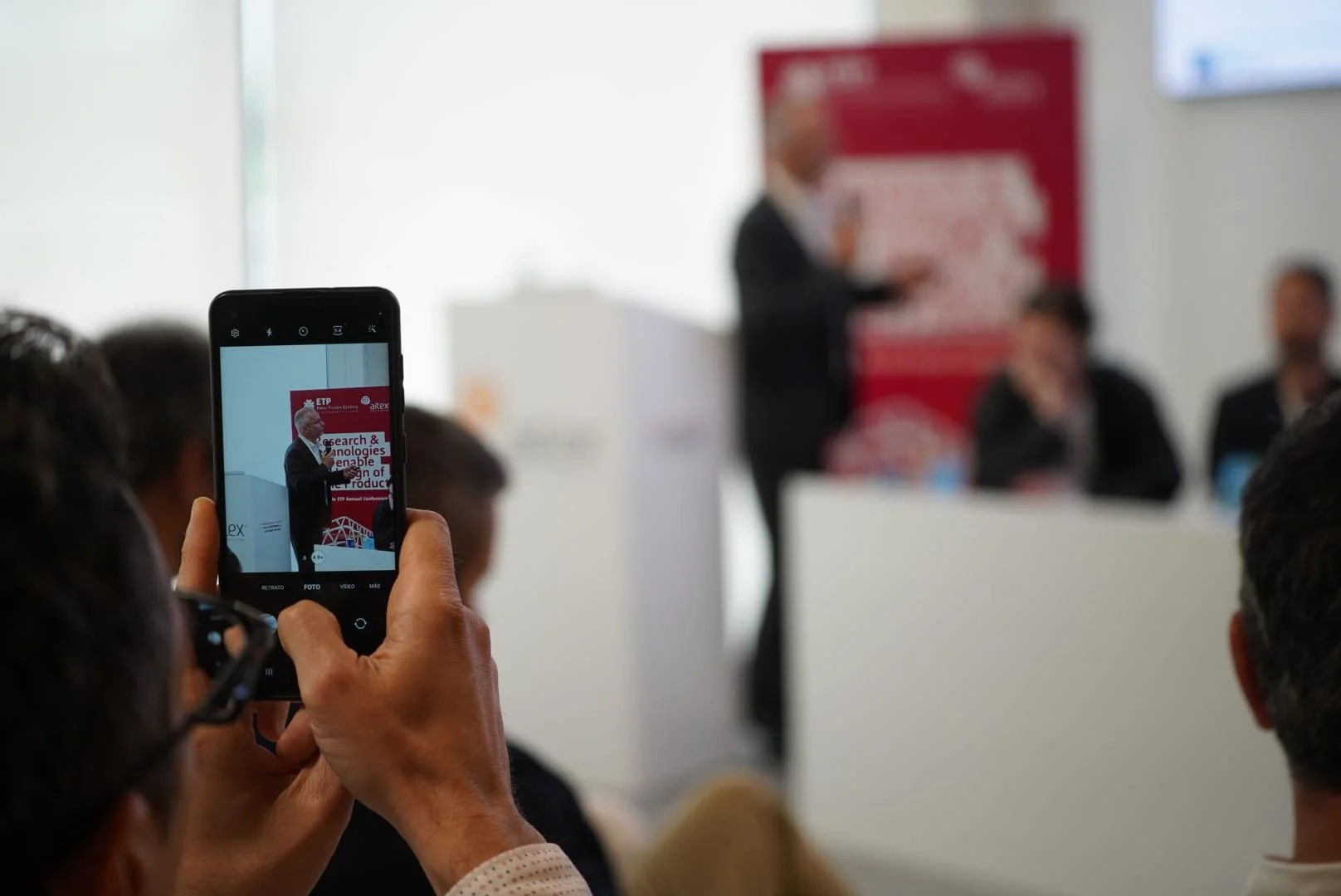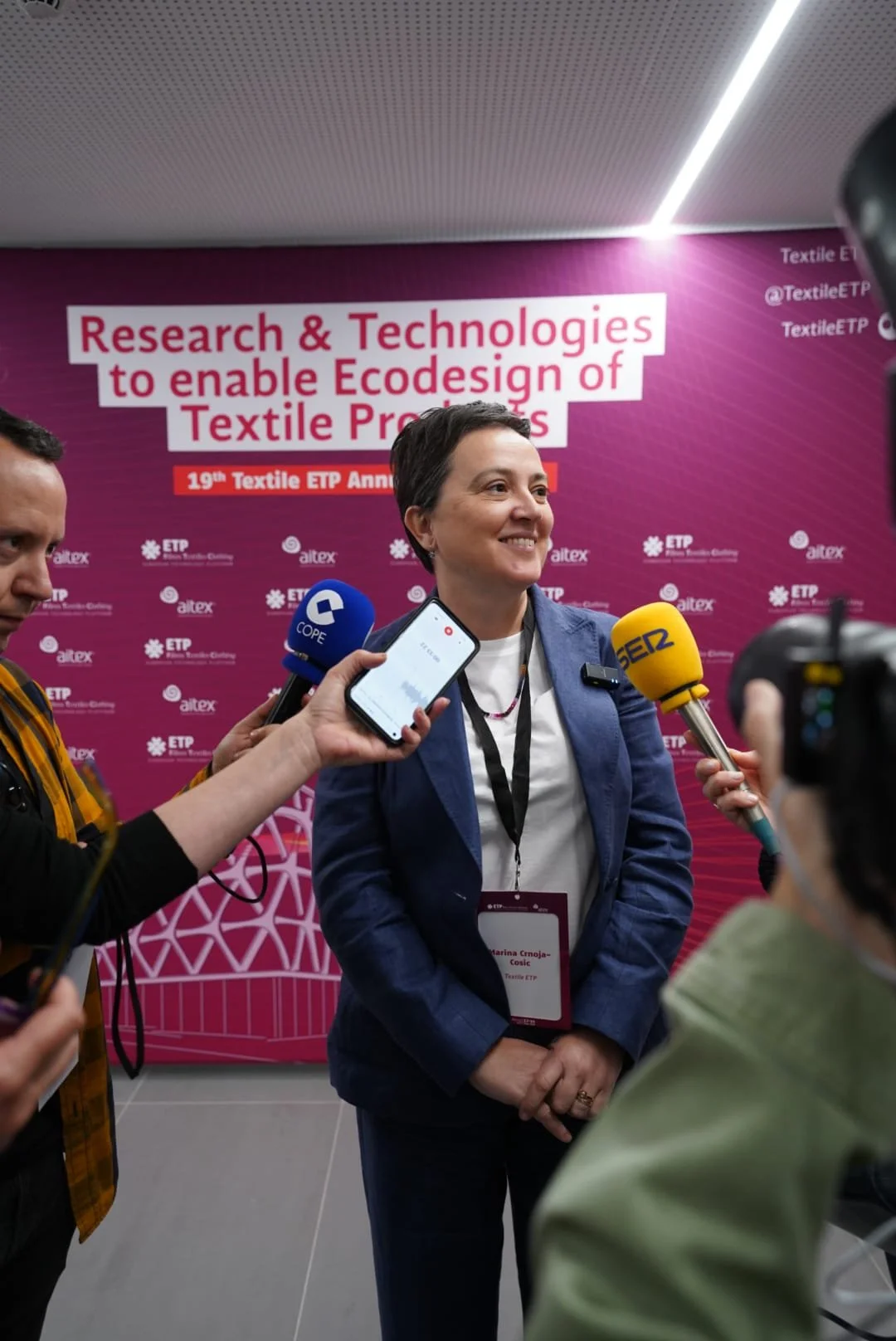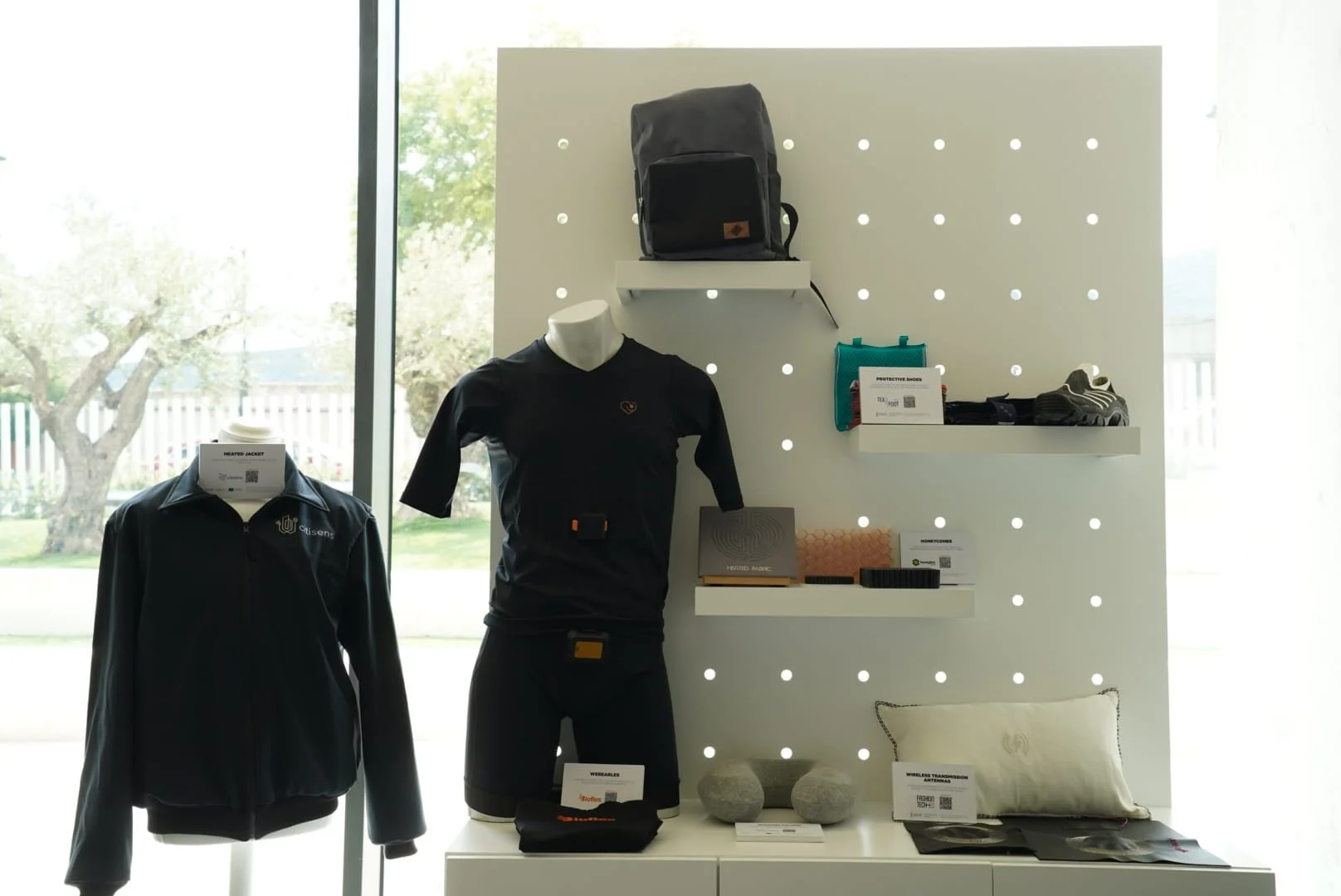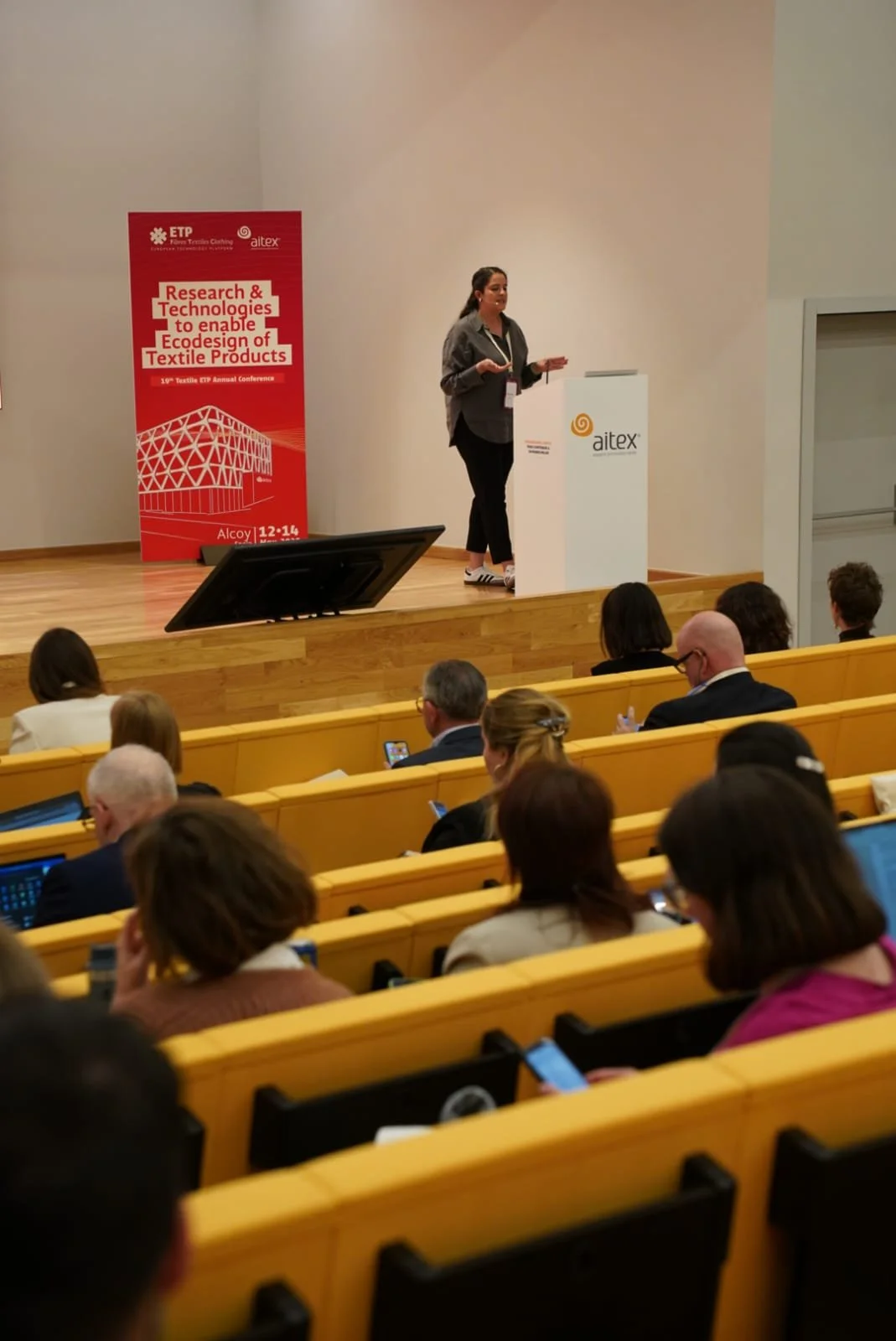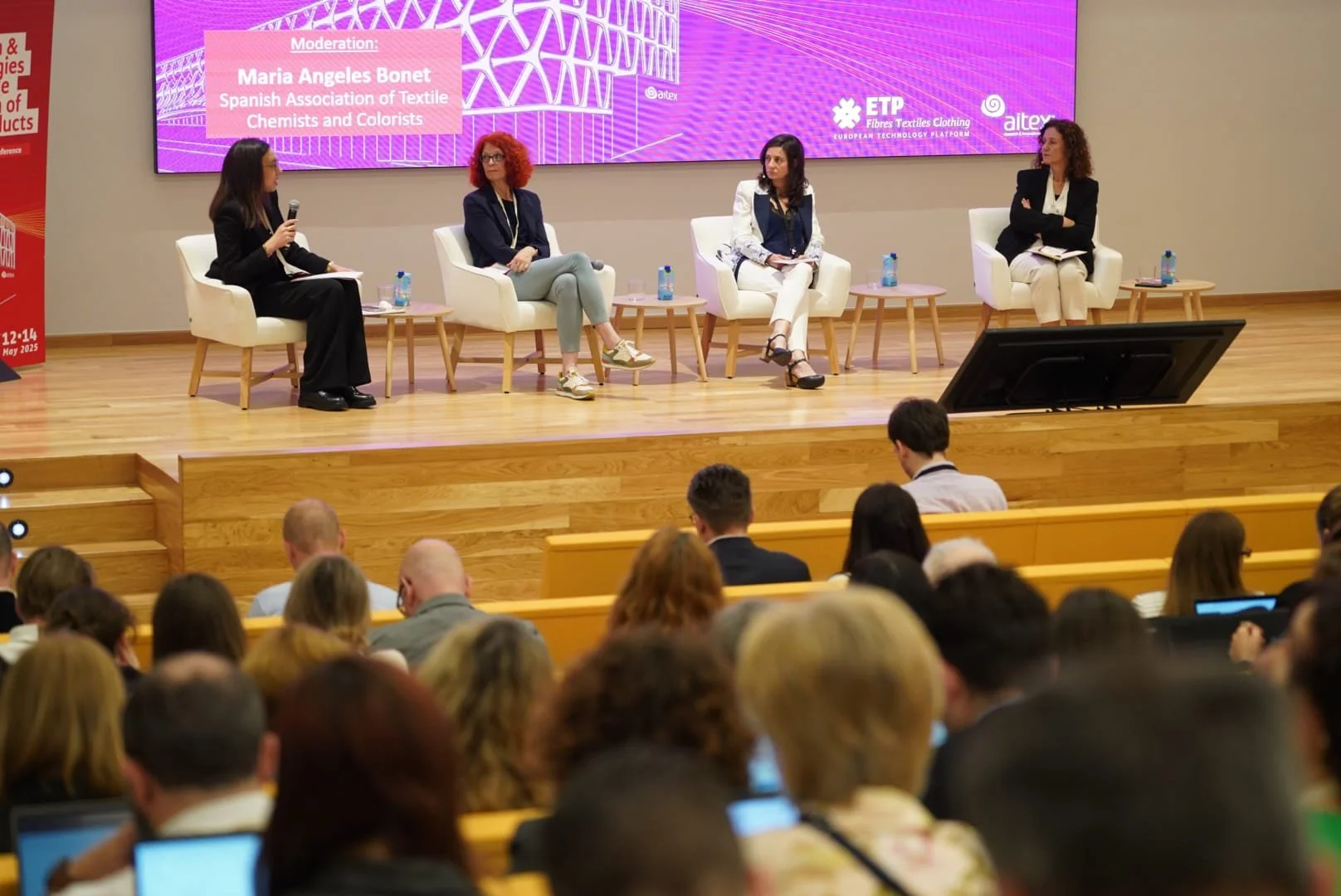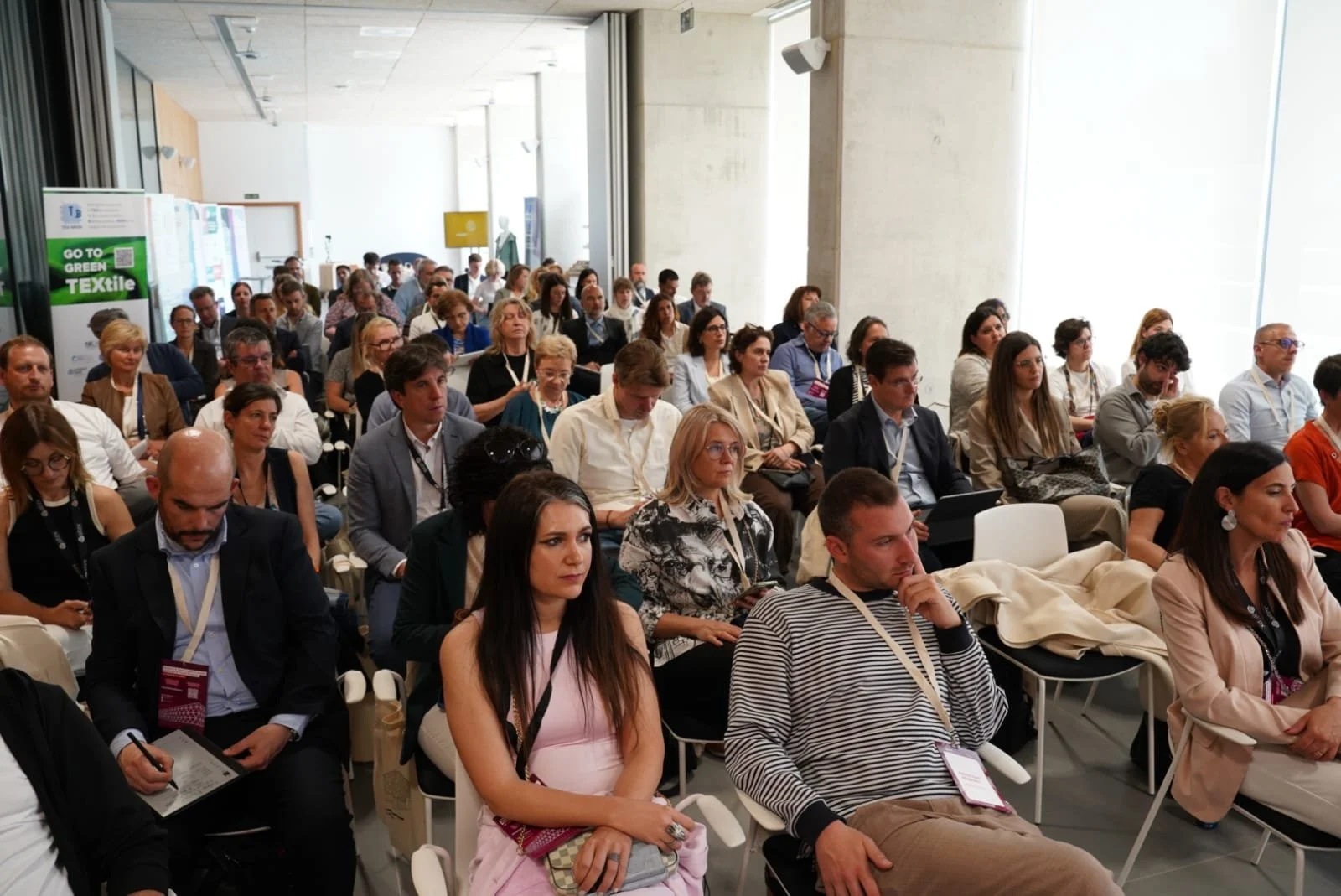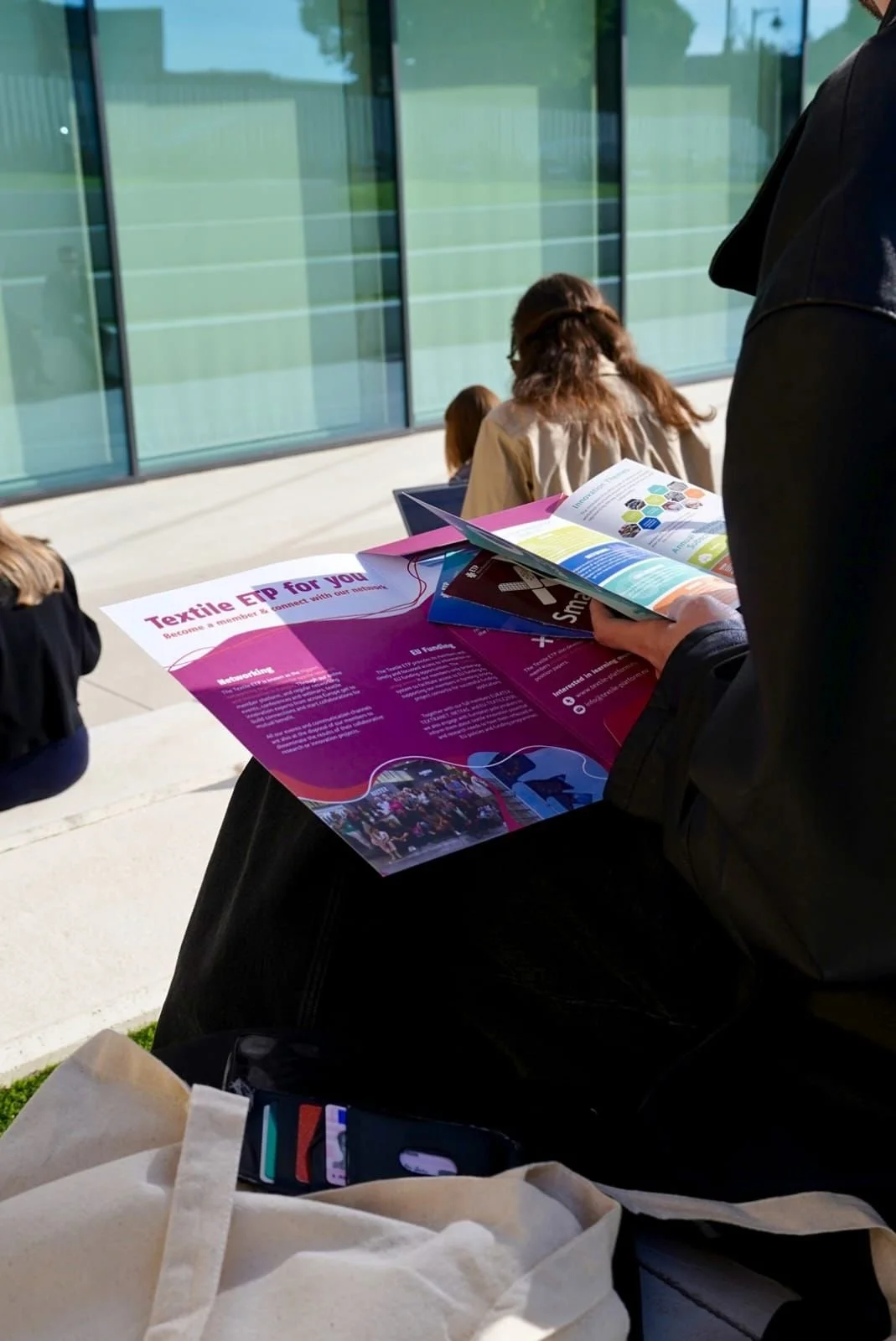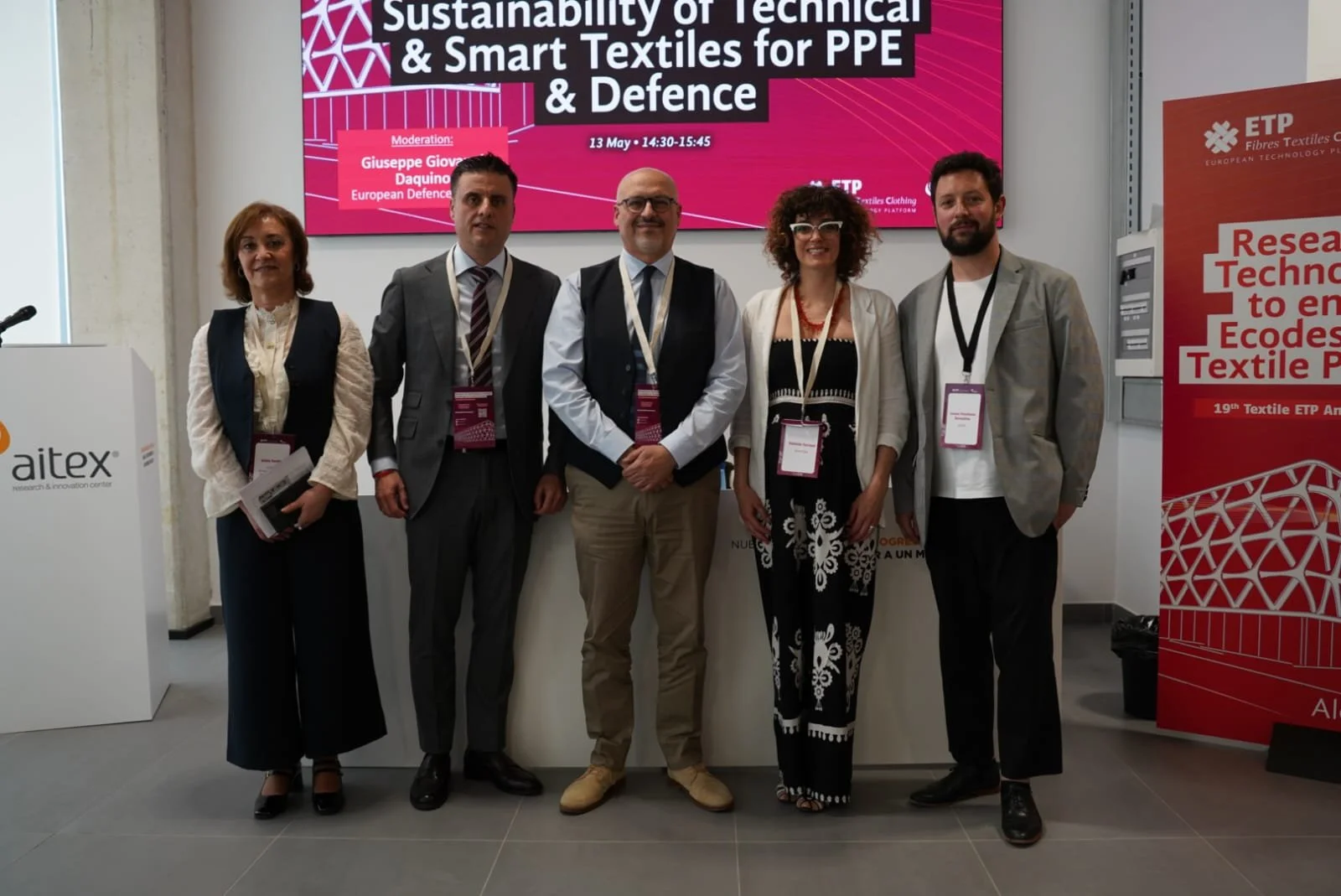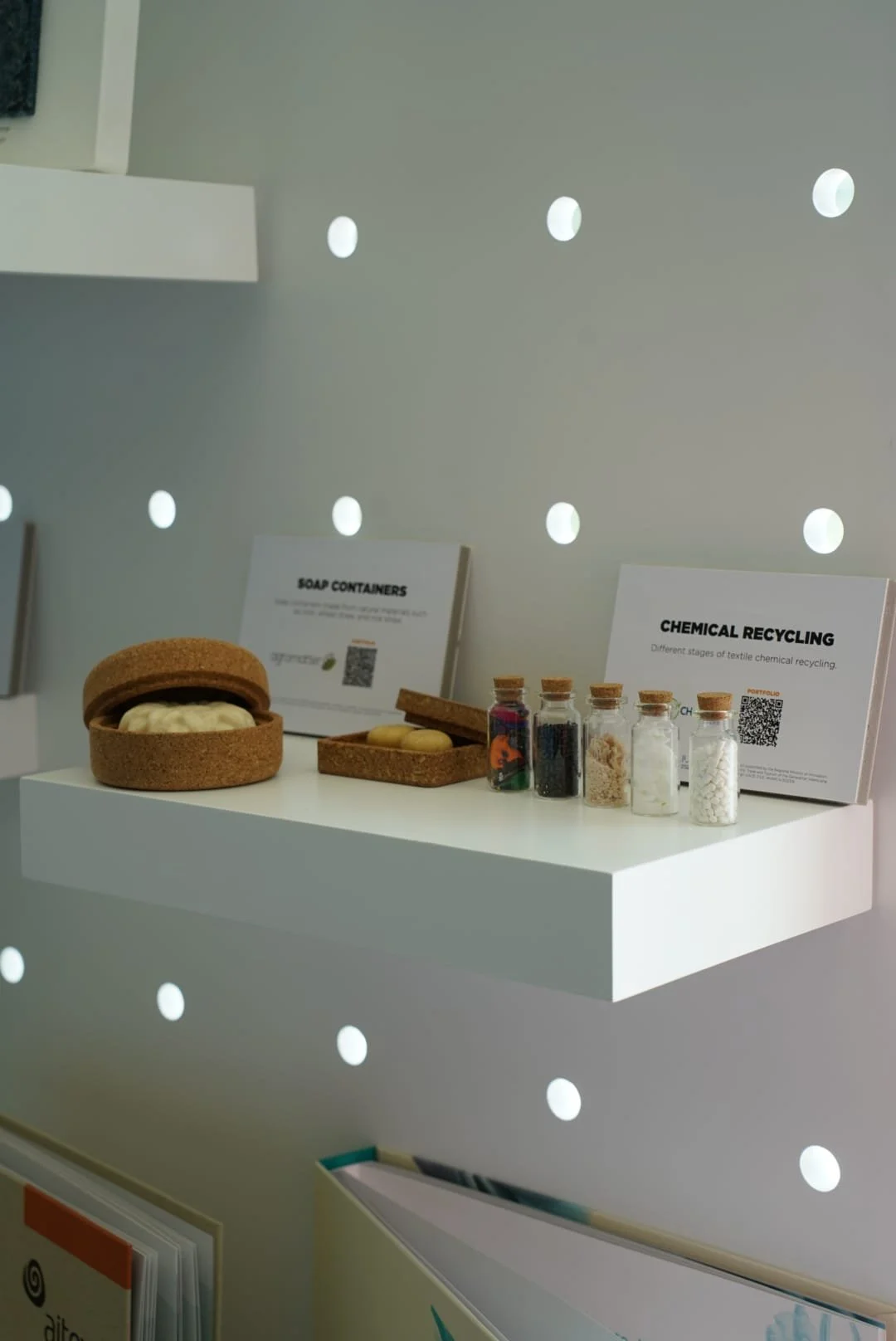Textile ETP Annual Conference 2025: between innovation, regulation, and sustainability
The 19th edition of the Textile ETP Annual Conference took place in Alcoy, Spain, welcoming over 260 professionals spanning the entire textile value chain. Against a backdrop of rapidly evolving regulatory frameworks, technological advances, and mounting environmental pressures, our conference offered a vital platform for strategic reflection, open dialogue, and collaboration.
Co-organised with AITEX, Spain’s leading textile research centre, the conference reaffirmed the sector’s determination to face the future with purpose and partnership.
A warm welcome to Alcoy on 12 May
The conference started on 12 May with a tour of AITEX’s research facilities. First on the agenda, attendees were guided through laboratories specialising in textile performance testing, from abrasion and fire resistance to comfort and chemical analysis. This visit provided a behind-the-scenes look at how fundamental research translates into industrial innovation. AITEX also showcased its ESBI testing centre, supporting defence applications and Euroclass certifications for building materials.
In parallel, other participants joined the “Textile ETP on Tour” members-only activity, which took them to Jover Textile, a local company demonstrating Alcoy’s industrial heritage alongside its forward-looking sustainability and design initiatives. Here, the group explored key areas of the facility, including the showroom, weaving machines, yarn finishing units, and wet processing lines, gaining a full picture of the company’s meticulous approach to quality and design.
Day 1 of the conference: from policy frameworks to practical innovation
'“As a network, Textile ETP champions collaboration across the value chain and integrates research with industry, not just in theory but in practice”
- Marina Crnoja-Cosic, President of Textile ETP
The official conference opening on 13 May began with welcoming remarks from representatives of Textile ETP and AITEX. First to take the floor was Marina Crnoja-Cosic, President of Textile ETP, who emphasised that research and innovation are not peripheral issues but central enablers of competitiveness, sustainability, and resilience in the textile industry. Marina then announced the signature of the Memorandum of Understanding for the EU Partnership Textiles of the Future, a €60M Horizon Europe initiative with the first ever textile-related funding call that will be officially open late May 2025. She concluded her speech with a clear call to action: strategic collaboration must lead the way beyond mere regulatory compliance. Next on stage was Leon Grau, President of AITEX, who highlighted Spain’s pivotal role as a European innovation hub, with over 650 textile companies generating more than €11 billion in turnover. Leon positioned AITEX as both a technical enabler and a strategic partner for businesses preparing for forthcoming regulations, especially the Digital Product Passport.
The first plenary session focused on the upcoming Ecodesign for Sustainable Products Regulation (ESPR), shaping textile manufacturing for years to come. Moderated by Charlotte Denis of Textile ETP, the session opened with Enrique Garcia John from the European Commission, who set the scene by clarifying that ESPR acts as a broad legislative framework, guiding detailed product-specific rules. Enrique outlined key forthcoming measures including Digital Product Passports, new product performance classifications, and mandatory disclosures on durability and sustainability, with implementation anticipated as early as 2027. The floor was then handed to Dirk Vantyghem, Director General of EURATEX, who brought a wider industry perspective, addressing ongoing challenges like global competition and fluctuating energy costs, stressing the necessity for enforceable, technically sound EU legislation that safeguards SME competitiveness. He added, “Ensuring imported textiles comply with the same standards is a critical next step,” calling for international alignment. Then, Cornelia Mohor from the European Commission’s DG GROW and Lutz Walter from Textile ETP shared insights into the Horizon Europe Partnership Textiles of the Future, and elaborated on the partnership’s focus areas: sustainable materials, circular supply chains, and next-generation manufacturing technologies. Closing this session, Vicente Blanes, Director General of AITEX, presented a strategic three-phase model supporting companies to prepare for ESPR compliance. Starting with circular economy diagnostics, moving to proof-of-concept development, and culminating in industrial deployment, Vicente emphasised the importance of adaptable business models and AITEX’s central role in driving sustainable transformation.
The second plenary session, moderated by Kamilla Drubina of Textile ETP, dove deeper into key aspects of, and methodologies for, ecodesign. First on stage was Antonio Delre from the European Commission’s JRC, who explained the policy modelling efforts underpinning ESPR, designed to balance environmental impact with economic feasibility. He stressed that sustainable design must be viable at scale, not just theoretically sound. Next, Simona Moldovan from highlighted that longevity depends not only on material robustness but also on user behaviour and systemic support throughout the product lifecycle. She explained how failure modes can be translated into measurable indicators to improve product assessment and design. Then, Drishti Masand introduced the T-REX project, which focuses on converting household textile waste into valuable feedstock. Drishti explained three fundamental principles of circular design: design for demand, design for durability, and design for recyclability. She urged that ESPR should standardise recyclability criteria while encouraging innovation and enhanced product performance. Drishti concluded by announcing upcoming practical trials to test these principles. Finally, Ana Tavares, CEO of RDD Textiles, closed the session by showcasing practical zero-waste garment designs and a dyestuff library created in partnership with Fashion for Good. Ana’s presentation underscored the link between innovative aesthetics and ecological responsibility, highlighting waste reduction and sustainable dyeing techniques.
In the afternoon, breakout sessions offered focused on two faces of ecodesign: design apparel and fashion products for effective circularity and recyclability & technical & smart textiles for PPE & defence.
In the session on Ecodesign & Sustainability of Technical & Smart Textiles for PPE & Defence, moderated by Giuseppe Giovanni Daquino from the European Defence Agency, Gilda Santos from CITEVE discussed developments in modular protective clothing systems incorporating additive manufacturing, advanced digitalisation, and mechanical recycling. Gilda emphasised the complex demands of PPE, balancing user safety, regulatory compliance, and sustainability. Next, Lucas Frochoso from AITEX presented two European Defence Agency-funded projects focusing on carbon fibre recycling for PPE development. Daniela Grassi from Grassi SpA then introduced the TRICK project, which applies circular design principles to PPE through innovative traceability solutions. Lastly, Jorge Felipe Espeso from FECSA offered an industry perspective, outlining systemic barriers such as regulatory rigidity, high costs, and limited access to certified sustainable materials.
Simultaneously, in the Design apparel and fashion products for effective circularity and recyclability session, Natalia Mena from Adidas led the discussion by describing the T-REX project’s textile-to-textile recycling chain, from collection and sorting to fibre recovery and manufacturing. She detailed the use of Techno-Economic Analysis (TEA) and Life Cycle Assessment (LCA) to ensure informed decision-making. Then, Anja Kossel Sharf and Doris Hondtong previewed the forthcoming T-REX Design Guide, designed to equip designers with practical tools that address circularity beyond mono-material approaches. Doris emphasized that “designers must design not only for recyclability but also for demand and durability.” Next, Iro Kofokotsiou from Fashion for Good and Mamoon Ahmed Cheema from Adidas presented a business viability study, highlighting cost drivers and structural gaps that limit large-scale textile recycling. Mamoon concluded with a key insight: “Recycled textile products need consumer demand, not just supply-side pressure.”
The day closed with a plenary session moderated by Phil Patterson, Managing Director at Colour Connections, focusing on decarbonisation and smart resource use. Michael Schragger, Director of STICA, began by presenting a dual-structure approach combining collective industry action with individual company climate strategies. He identified challenges including fragmented data, infrastructure gaps, and policy shortcomings. Next, Axel Pieper from Brückner Maschinenbau detailed the high energy consumption of dry finishing processes compared to wet finishing, highlighting the urgency to target decarbonisation in later manufacturing stages. Finally, Sergio Grau, founder and CEO of Evolutia Activos, outlined a strategic decarbonisation roadmap involving energy audits, adoption of ISO 50001, and emissions tracking. He cautioned against shifting emissions offshore and stressed the importance of lifecycle thinking, considering both production and consumption impacts.
Regional innovation, chemistry, and compliance for our final day
Day two began with a focus on sustainable chemistry. Chaima Elyahmadi from EURATEX reviewed recent regulatory trends on substances of concern, including REACH revisions and ESPR’s chemical transparency approach. She warned of the complex implications of PFAS restrictions, especially for PPE applications. Following her, Annegret Vester of CHT Group shared her company’s efforts to align their chemical portfolio with circular economy principles, particularly in the automotive sector. She acknowledged that while PFAS alternatives exist, trade-offs remain, calling for ongoing research and strong supply chain cooperation. Then, Maria Blanes from AITEX presented research on natural dyes derived from agricultural waste such as walnut and pomegranate. Despite challenges like colourfastness, Maria highlighted their potential to reduce microplastics and wastewater toxicity. She proposed Spanish agricultural waste as a promising dye source and wastewater filtration for colourant recovery. In this specific session, moderated by Maria Angeles Bonet from Spanish Association of Textile Chemists and Colorists affiliated to the Polytechnic University Valencia, all speakers underscored the essential role of innovation, regulation, and collaboration in driving the textile industry’s sustainable transformation.
The morning concluded with two simultaneous breakout sessions, with a first one, moderated by Tilla Kross of Textile ETP, which examined the practical implementation of the Digital Product Passport (DPP). Jonas Larsson, professor at University of Boras, opened by outlining a three-phase roadmap: pre-implementation (strategy and infrastructure), implementation (data collection and transfer), and post-implementation (data retention and recovery). He stressed that the DPP represents an opportunity for new business models, not merely a regulatory burden. Next, Ana Barros from CITEVE shared insights from Portuguese pilot projects such as STVgoDIGITAL and BE@T. These pilots revealed the complexity of data demands, with consumer needs differing from those of brands and recyclers. Ana presented the DPP 1.0, consolidating company and product data into a composite score resembling NutriScores, ranging from A to F. She illustrated this approach using the home textile value chain and flagged challenges including unreliable data and manual processes, making a case for an automated, user-friendly DPP 2.0. Following her, Robby Dubus, Head of Development at Textil’IA, introduced Odith, a collective data platform facilitating textile traceability. Robby argued that traceability has become a market license, not an option, and presented Odith as a shared infrastructure supporting compliance and unlocking business value. Finally, Kamila Kocia from atma.io (Avery Dennison) presented the CIRPASS-2 project, scaling DPP deployment in four value chains as part of the “Textile Loop” pilot. She emphasised the DPP’s role in supporting circularity strategies, particularly reuse and recycling. Kocia highlighted RFID technology as a crucial enabler for automated sorting and advancing circular textile management.
At the same time, the second parallel session led by Lya Hernandez, from the Dutch Institute of Public Health & Environment, focused on Safe & Sustainable by Design (SSbD) in technical and smart textiles. Opening, Alexander Bjorling, SSbD Consulting, outlined the policy context of SSbD and developments from 2022 to 2025. He presented the IRISS network and stakeholder platform, along with a proposed SSbD workflow developed by SEFIC under the IRISS project. He highlighted key benefits of SSbD, including innovation, regulatory compliance, market positioning, risk reduction, and economic viability. He was followed by Stefano Chimenti from CROMOGENIA who addressed the global context of PFAS, noting its widespread use beyond textiles. He explained the material’s repellency properties and presented performance data comparing a CROMOGENIA textile product to a generic alternative. Test results showed sustained repellency against various liquids, even after multiple wash cycles at 40°C. Next on stage, Anna Karin Hellström, from RI.SE, presented the BIOSUSTEX project, aimed at replacing harmful chemicals with sustainable alternatives and strengthening circular, bio-based textile solutions. She discussed four case studies, with particular focus on dye and elastane removal for recycling, and the recycling of dope-dyed fibres. Finally, Erik Macias Simeon, AITEX, introduced the Integrano project, developed in collaboration with Massimo Perrucca, Project s.a.s., who then addressed the industrial benefits of applying SSbD. He presented a stage-gate methodology for design and redesign, using the production of antibacterial polycotton fabrics for medical use as a case example. He also discussed KPI definition as part of evaluating SSbD effectiveness.
In the closing session, Judith Bosch of Textile ETP moderated a discussion on the role of regional innovation ecosystems featuring first Braz Costa from CITEVE who underscored the importance of simplicity, scalability, and robust auditing for DPP compliance. He cautioned that without fair market enforcement, innovation risks stagnation. Then, Guy Buyle from Centexbel shared the Belgian perspective, describing an R&D-driven industry focused on interior and technical textiles, and highlighting examples of successful technology transfer amid structural constraints. Jennifer Palumbo from EURATEX presented the RegioGreenTex project, which fosters SME innovation through cross-regional cooperation under the I3 Programme. She introduced a new digital infrastructure featuring the Waste Wizard tool, designed to streamline textile waste valorisation. Finally, Felipe Carrasco, Regional Secretary of Industry for Valencia, closed the session with a policy vision stressing the importance of national and regional alignment and announced upcoming local support measures for innovation clusters and research centres.
The 2025 Textile ETP Annual Conference in Alcoy made one thing clear: regulation alone will not drive the textile industry’s transformation. Rather, it will be the decisions and collective actions of researchers, innovators, businesses, and policymakers that shape a sustainable future. As Europe stands at a crossroads for textile design, production, and consumption, Textile ETP and its network are ready to lead the way forward.
Photos of the Textile ETP Annual Conference 2025 are available here.



